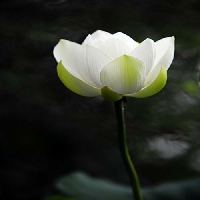The postgraduate entrance examination subjects of Chinese language and literature major mainly include ideological and political theory, foreign language and two professional courses. Among them, ideological and political theory and foreign language are compulsory subjects for the unified examination, and specialized courses are determined according to the specific professional direction of the applicant.
Contents of Postgraduate Examination for Chinese Language and Literature
Chinese philology (050103)
01 History of Chinese Grammar
02 Lexicology (including exegetics)
03 Philology
① 101 Political Theory
② 201 English or 202 Russian or 203 Japanese or 211 French or 212 German
③ 617 Linguistic Theory ④ 834 Basic Chinese (including ancient Chinese and modern Chinese)
Chinese classical philology (050104)
01 Collection and Research of Classical Books and Records of Traditional Linguistics
02 Theories and methods of ancient book sorting research
① 101 Political Theory
② 201 English or 202 Russian or 203 Japanese or 211 French or 212 German
③ 618 Ancient Chinese
④ 835 Interpretation of classics and cultural history (knowledge of Chinese classical literature and knowledge of Chinese cultural history)
Chinese classical philology (050104)
01 Collection and Research of Classical Books and Records of Traditional Linguistics
02 Theories and methods of ancient book sorting research
① 101 Political Theory
② 201 English or 202 Russian or 203 Japanese or 211 French or 212 German
③ 618 Ancient Chinese
④ 835 Interpretation of classics and cultural history (knowledge of Chinese classical literature and knowledge of Chinese cultural history)
Ancient Chinese Literature (050105)
01 Pre Qin and Han Literature
02 Literature of the Wei, Jin, Southern and Northern Dynasties, Sui, Tang and Five Dynasties
03 Literature of Song and Yuan Dynasties
04 Literature of Ming and Qing Dynasties
① 101 Political Theory
② 201 English or 202 Russian or 203 Japanese or 211 French or 212 German
③ 616 Literary Theory and Modern and Contemporary Chinese Literature (Literary Theory Part includes Introduction to Literature, Ancient Chinese Literary Theory and Western Literary Theory)
④ 833 Ancient Chinese Literature and Foreign Literature
Sinology and Sinology (050122)
01 Sinology and its foreign teaching
02 Foreign Sinological Studies
03 Classical philology and humanistic computing
04 Research on Unearthed Documents
① 101 Political Theory
② 201 English or 202 Russian or 203 Japanese or 211 French or 212 German
③ 618 Ancient Chinese
④ 835 Interpretation of classics and cultural history (knowledge of Chinese classical literature and knowledge of Chinese cultural history)
Chinese Minority Languages and Literature (050107)
01 Research on Literature of Minority Writers
02 Research on National Folk Literature
① 101 Ideological and Political Theory
② 201 English 1
③ 621 Literature of Minority Writers
④ 821 Folk Literature of Ethnic Minorities

